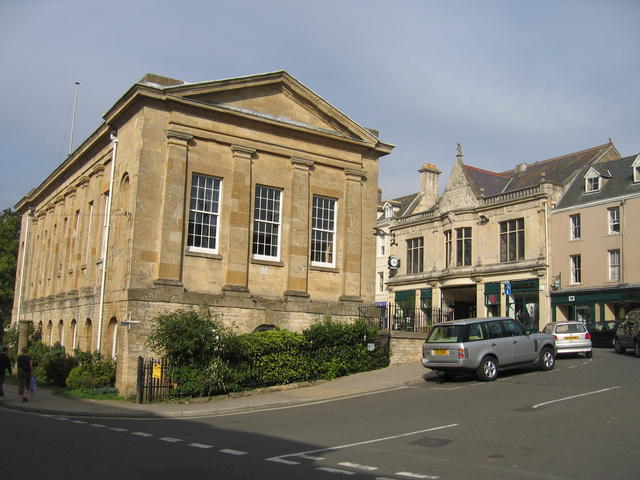July 2013 Trip to Chipping Norton
Wikipedia: About Chipping Norton
I had wanted to travel to Chipping Norton ever since I read the Averill Books at my Grandparents' house, as a child. As it turns out, my wife was born a few miles from Oxford and Chipping Norton, when her father was stationed at RAF Brize Norton in the early 50’s. Last spring, I learned that my son was enrolling in a summer semester at Oxford University. The timing coincided with a major WWII Air Show at Duxford, UK. All of a sudden we had several great reasons to plan our trip to the Cotswold area of England.
In the months before the trip, we exchanged multiple emails, concerning our Averill ancestors from the 1630s, with Chipping Norton Museum with volunteer, Dave, and local historian, Alan. Both are very familiar with Clara Avery and subsequent Averill | Averell research. We met at the Museum, followed by lunch and a walking tour of town, then on to St. Mary's
Chipping Norton, aka “Chippy,” a charming town, located in the beautiful Cotswold area of England, is 75 miles northwest of London. It is an enjoyable step back in time, it's ambience unspoiled by urban sprawl and commercialism. For those of you who intend to visit Chipping Norton, we recommend that you go and enjoy the town, St. Mary The Virgin Church, and not spend time researching documents. Documents from the 1600s are held elsewhere, and due to the fact that they are in Latin or Old English, are best left to professionals skilled in that area.
The center of the town retains much of what would have been there in 1635. The word “Chipping” means ‘market’, and “Norton” means ‘north’, hence, Chipping Norton was the northern market of the region.
Aerial Photo #1 http://goo.gl/maps/VsZnj
Note that Chipping Norton is surrounded by fields, and no urban sprawl.
Aerial Photo #2 http://goo.gl/maps/hEXdx
Street names of the 1600s, are still used today. Market Street, Spring Street, Church Street, Horse Fair, High Street, Cattle Market, etc.
Aerial Photo #3 http://goo.gl/maps/t7mf9
This aerial gives a good view of some of the original lots. William Averell very likely would have occupied one of these properties, as he was a Cordwainer. A Cordwainer made high quality shoes (see Wiki for more information http://en.wikipedia.org/wiki/Cordwainer) The front of his house would have opened to the market street as a shop. One can see on this aerial photo that the lots are very long and narrow. Homes of that time were self-contained residences and farms. All of these opened out to the street with a shop front, more than likely a two story residence, and the long lot behind held gardens and livestock to maintain the daily needs of the family. Once or twice a year there was a mop or fair, during which time, people from the surrounding countryside brought to town, horses, goats, cattle, sheep, and many other items with which to trade. The side streets: one street was designated for horses; one for cattle; one for sheep – many of the streets retain these names today.
St. Mary The Virgin - Church History
We spent over an hour in St. Mary The Virgin Church. We saw the plaque on the wall, which we assume, Clara Avery arranged to be placed in the church in 1928. From a document we received, it appears that Clara made a sizeable donation for the restoration for a portion of the churce, and the placement of a new altar. Immigration records show that Clara made several trips to England and other places in Europe. It is clear that she had the financial where with all to make this type of generous donation.
From the Averills' wills, we know that they were buried in the church yard, however, no monuments remain. Just as we know that William was buried in the "Old Burying Ground" in Ipswich, no momument has survived there either.
During our time in The Cotswolds, we visited numerous church yards. One thing which was apparent, is that headstones made from the local limestone, very seldom survived more than 150 years. Another interesting fact is that during the religious upheaval that coincided with William's departure, most of the churches were stripped of stained glass windows and other ornate religious items, believed by the Puritans to be counter to the
Our family looks forward to a return trip!
Links of interest relating to Chippy and to St Mary's
https://en.wikipedia.org/wiki/Chipping_Norton
http://www.crsbi.ac.uk/site/26/
http://www.britainexpress.com/attractions.htm?attraction=5086
http://www.sacred-destinations.com/england/chipping-norton-church
http://www.oxfordshirecotswolds.org/things-to-do/attractions/chipping-norton-st-mary-the-virgin-church-p521121
Sarah Averell Wildes, born in Chipping Norton, later wrongly convicted of witchcraft in Salem, MA https://en.wikipedia.org/wiki/Sarah_Wildes

Market Hall in town center
Spring Street
Parrish Church of St. Mary the Virgin
In the far corner, under the windows, you can see the plaque on the wall of one of the side chapels, which we assume, Clara Avery arranged to be placed in the church.
This is the plaque, which we assume, Clara Avery arranged to be placed in the church in 1928
Additional photos of Chipping Norton and Broadway, are located on our Shutterfly Share Site: https://averillproject.shutterfly.com/